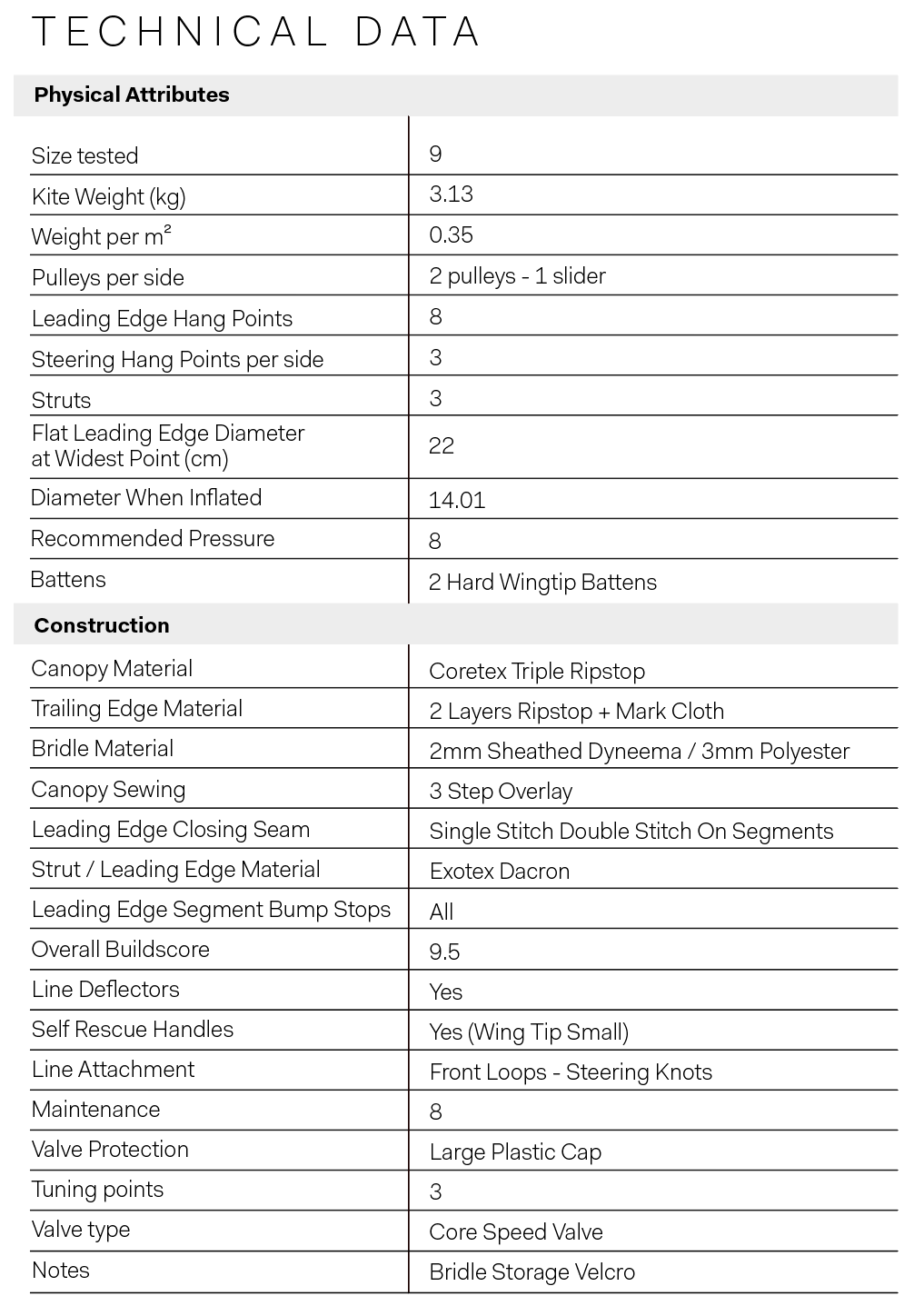When you purchase gear through links on our site, we may earn a small commission. Here’s why you can trust our tests and our affiliate partner.
The GTS has garnered a serious reputation as a Big Air and overpowered riding machine, cultivating its image with countless photos featuring the kite at impossibly low angles in front of Table Mountain and low level short line gravity defiance. With heavy hitting riders like Steven Akkersdijk and Joshua Emanuel helping to guide development, we were intrigued as to how they would soup it up further for the next generation.
The core (sorry) principles of the GTS6 remain the same. We’re looking at a three-strut future C-shape kite with quite full square wingtips and a short and minimal quad pulley bridle. The CIT bridle settings carry over from the GTS5, letting you tune the kite to your liking, with the tiny increments on the leading edge making noticeable changes to the flying characteristics. The major revisions this year include a fresh strut design, making them higher diameter, stiffer and lighter than before. The leading edge looks to have been beefed up a little in diameter.
Unhooked, the GTS6 is no slouch whatsoever. It is a kite that likes to be adequately powered and ridden with board speed, and in its range the pop and slack is in abundance; it is a definite level up from the popular Nexus range in terms of more purist unhooked work. Tune it down with the steering hang points combined with the CIT mode and its directness on the bar is formidable enough for even the most discerning freestyler to dominate a Brazilian lagoon until sunset.
Where the kite is designed to shine is, of course, in the top end. Take it out absolutely lit and hooked in, and the GTS6 lights up like a precision German Christmas tree. Forward board speed is rapid, and initiating a jump requires some timing and skill. Hit the kicker clean and time it all well, and it’s going to lift you off the water like an ejector seat, providing plenty of reassuring overhead support. Post-loop, its legendary reputation to climb you out of a precarious situation remains accurate, and the level of catch on offer constantly surprised us. You only needed to let a little bit of sheet out after the kite loop, and it will rush up and make it exceptionally simple to time a heli-loop for soft landings. When running downwind at a high rate of knots we were intrigued to see how well the kite performed leeward. Considering how C-shaped and aggressive it appears, it drifts with surprising balance. It also seems to take a gust on the chin a little more amicably than its predecessor, which would make perfect sense with the stiffer airframe.
The GTS6 is a true evolution of the model – it’s like someone has smoothed out the kite’s characteristics even further making using the kite in extreme high wind all the more reliable. Purists are not going to be disappointed, as the GTS6 certainly hasn’t lost even a hint of that gut-wrenching looping and boosting ability. In fact it may even have a little more g-force on tap than previously, but it performs with even more finesse. The range of use and versatility built into the settings is also noteworthy. When the sand starts flying down Table Bay, there are not many other kites we’d rather be rigging.
